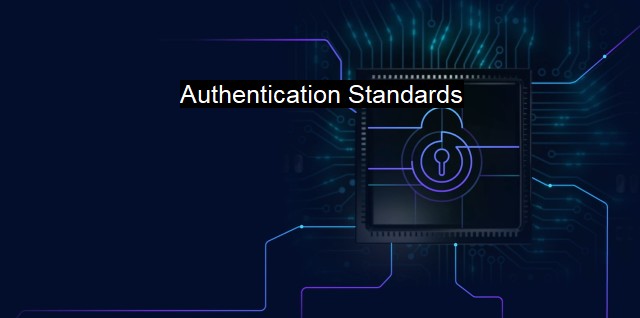What are Authentication Standards?
The Importance of Authentication Standards in Cybersecurity: Safeguarding Sensitive Data in Today's Digital World
Authentication standards in the realm of cybersecurity and antivirus are defined codes and regulations that outline the necessary procedures for verifying the credentials of users on different types of computing platforms or systems. They establish a frame of reference to determine the exact processes every individual is required to undertake to gain access to a particular system, network, or online platforms, often demanding proofs confirming that the user or system is exactly who it claims to be.Authentication standards are critical on multiple fronts. Firstly, they foster improved cybersecurity by curbing unauthorized users' infiltration into embargoed systems, mitigating malicious actions like theft, manipulation, and corruption of sensitive data. Secondly, they provide a formidable barrier to confine destructive elements like viruses, worms, and other malware that can expose system vulnerabilities. reliable user authentications also ensure that rightful users are allocated suitable access levels, thereby preserving sufficient control on network components and secure data.
Authentication methods can be broadly categorized into three kinds: something you know, something you have, and something you are. The first kind involves sharing common knowledge between the system and the user, like passwords, PINs or security question answers. The second type leverages physical items at the user’s disposal, like smart cards, security tokens or SIM cards. The third kind refers to biometric hardwires such as fingerprints, facial recognition, eye scans or voice recognition, capitalizing on the user’s physical or behavioral attributes that are unique and hard to replicate.
Methods vary depending upon levels of data sensitivity and system curtailment. Standard methods incorporate single-step authentications like password input, whereas higher levels of security necessitate multiple-step or multifactor authentication processes. The latter involve a sequence of two or more independent validation processes, where the authentication factors are derived from two or more categories. Password-based

Authentication Standards FAQs
What are authentication standards?
Authentication standards are a set of guidelines and protocols that ensure the security and integrity of user authentication processes. They help protect against unauthorized access and ensure that only authorized individuals can access sensitive information or resources.Why are authentication standards important in cybersecurity?
Authentication standards are critical to cybersecurity because they help prevent unauthorized access to sensitive data and systems. Without proper authentication, cybercriminals could easily gain access to critical systems and data, causing irreparable damage to an organization's reputation and financial stability.What are some common authentication standards used in the cybersecurity industry?
Some common authentication standards used in the cybersecurity industry include Single Sign-On (SSO), multi-factor authentication (MFA), OAuth, OpenID Connect, and SAML. These standards help to ensure that only authorized individuals are granted access to sensitive information and resources.Can antivirus software help with authentication standards?
Antivirus software can help with authentication standards by verifying the identity of the user and ensuring that the system is not compromised by malware. However, antivirus software is not a substitute for proper authentication protocols, such as multi-factor authentication (MFA), which adds an additional layer of security to the authentication process.| | A | | | B | | | C | | | D | | | E | | | F | | | G | | | H | | | I | | | J | | | K | | | L | | | M | |
| | N | | | O | | | P | | | Q | | | R | | | S | | | T | | | U | | | V | | | W | | | X | | | Y | | | Z | |
| | 1 | | | 2 | | | 3 | | | 4 | | | 7 | | | 8 | | |||||||